
The Enchanting Isalo National Park: Madagascar's Natural Gem
Explore the stunning landscapes and diverse wildlife of Isalo National Park, Madagascar's natural gem, with its unique rock formations, deep canyons, and lush oases.
Isalo National Park, located in the Ihorombe Region of Madagascar, is a captivating natural wonderland. This park is famed for its stunning sandstone formations, deep canyons, and lush oases. A visit here feels like stepping into another world, where unique landscapes and rare wildlife abound. The park's terrain is incredibly diverse, featuring rocky ridges, grasslands, and dense forests. As you hike through the trails, you will encounter striking rock formations that have been sculpted by wind and water over millions of years. These natural sculptures, such as the Window of Isalo and the Canyon des Singes, are perfect spots for photography enthusiasts. Isalo is also home to an array of wildlife, including lemurs, rare birds, and endemic plants. The park's freshwater pools, like the Piscine Naturelle, offer a refreshing break and are ideal for a relaxing swim. With its breathtaking landscapes and rich biodiversity, Isalo National Park offers an unforgettable experience for nature lovers and adventure seekers alike.
Local tips in Isalo National Park
- Visit during the dry season (April to October) for the best weather conditions and easier hiking trails.
- Hire a local guide to enhance your experience and learn more about the park's unique geology and wildlife.
- Bring plenty of water and sun protection, as the park can get very hot, especially during midday.
- Wear sturdy hiking shoes to navigate the rocky and uneven terrain safely.
- Don't miss the Piscine Naturelle, a natural swimming pool, for a refreshing dip after a long hike.
The Enchanting Isalo National Park: Madagascar's Natural Gem
Isalo National Park, located in the Ihorombe Region of Madagascar, is a captivating natural wonderland. This park is famed for its stunning sandstone formations, deep canyons, and lush oases. A visit here feels like stepping into another world, where unique landscapes and rare wildlife abound. The park's terrain is incredibly diverse, featuring rocky ridges, grasslands, and dense forests. As you hike through the trails, you will encounter striking rock formations that have been sculpted by wind and water over millions of years. These natural sculptures, such as the Window of Isalo and the Canyon des Singes, are perfect spots for photography enthusiasts. Isalo is also home to an array of wildlife, including lemurs, rare birds, and endemic plants. The park's freshwater pools, like the Piscine Naturelle, offer a refreshing break and are ideal for a relaxing swim. With its breathtaking landscapes and rich biodiversity, Isalo National Park offers an unforgettable experience for nature lovers and adventure seekers alike.
When is the best time to go to Isalo National Park?
Unmissable attractions to see
Ranomafana National Park
Discover the breathtaking beauty and unique wildlife of Ranomafana National Park, an ecological treasure in Madagascar waiting to be explored.

Isalo window
Discover the breathtaking Isalo Window in Madagascar, a stunning natural arch offering picturesque views and unforgettable hiking experiences in Isalo National Park.

Zombitse-Vohibasia National Park
Explore the breathtaking landscapes and unique wildlife of Zombitse-Vohibasia National Park, a true natural wonder in Madagascar.

Nationalpark Andohahela
Explore the majestic Andohahela National Park, a biodiversity hotspot in Madagascar, offering stunning landscapes and unique wildlife encounters.

Ankafobe Reserve
Explore the breathtaking Ankafobe Reserve, a national treasure of Madagascar, rich in biodiversity and natural beauty, perfect for nature enthusiasts.

Accueil du parc Zombitse-Vohibasia
Explore Zombitse-Vohibasia National Park, Madagascar's hidden gem, where unique wildlife and breathtaking landscapes await every nature lover.

Feland Wild center
Explore the captivating Feland Wild Center in Madagascar, a wildlife park dedicated to preserving the island's unique biodiversity and offering unforgettable experiences.

Botanic Park
Experience the tranquility and vibrant flora of Botanic Park, a botanical garden that celebrates Madagascar's unique biodiversity.

Malaso Circuit Hiking Trail
Discover the stunning landscapes and rich biodiversity of the Malaso Circuit Hiking Trail, perfect for adventurers and nature lovers alike.
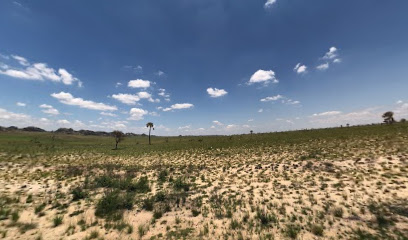
Canyon Des Singes
Discover the breathtaking landscapes and unique wildlife at Canyon Des Singes, Madagascar's hidden gem for nature lovers and adventure seekers.
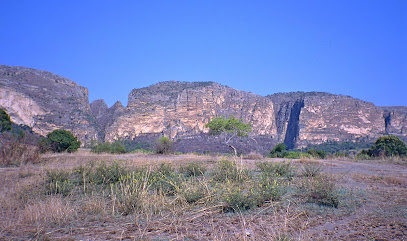
Queen of Isalo
Explore the breathtaking landscapes of Queen of Isalo, a natural wonder in Madagascar's Isalo National Park, perfect for nature lovers and adventurers.

Malaso Circuit Trail Start
Discover the stunning natural beauty and biodiversity of the Malaso Circuit Trail, a premier hiking destination in Madagascar.

Isalo's View Point
Experience the stunning vistas of Isalo's View Point, where Madagascar’s natural beauty unfolds in breathtaking landscapes and unique rock formations.
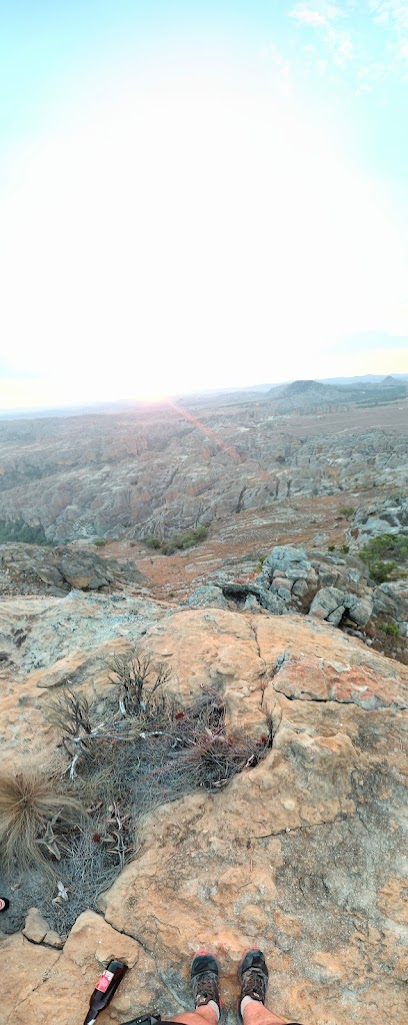
Boot of Isalo Trail
Discover the breathtaking landscapes of the Boot of Isalo Trail in Madagascar, a hiking paradise with stunning rock formations and diverse wildlife.

Essential places to dine
Sakamanga Hôtel
Discover comfort and culture at Sakamanga Hôtel in Antananarivo—your perfect base for exploring Madagascar's vibrant capital.

Isalo National Park
Explore Isalo National Park: A breathtaking landscape filled with sandstone formations, unique wildlife, and rich cultural heritage awaits you in Madagascar.

Relais des Plateaux Hotel & Spa
Discover unparalleled luxury at Relais des Plateaux Hotel & Spa in Talatamaty – your ultimate getaway for relaxation and gourmet dining.
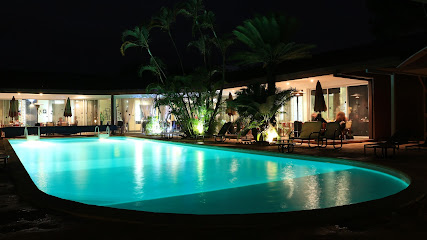
Le Jardin du Roy
Experience unparalleled comfort and breathtaking views at Le Jardin du Roy, your gateway to Isalo National Park in Madagascar.

Le Carnivore - Restaurant Bar Lounge
Experience the best of Malagasy cuisine at Le Carnivore, where flavor meets vibrant nightlife in Antananarivo.

Isalo Rock Lodge
Discover luxury amidst nature at Isalo Rock Lodge – your gateway to Madagascar's stunning landscapes and adventures.

Zandina
Discover authentic Malagasy cuisine at Zandina, a cozy restaurant in Antsirabe offering delicious dishes and a warm atmosphere.

Hôtel le Relais de la Reine de l'Isalo
Discover serenity and adventure at Hôtel le Relais de la Reine de l'Isalo - your gateway to Isalo National Park's breathtaking landscapes.

Le Buffet du Jardin
Discover the charm of Le Buffet du Jardin in Antananarivo—where local flavors meet cozy ambiance for an unforgettable dining experience.

Hotel restaurant Niaouly
Experience authentic Malagasay flavors at Hotel Restaurant Niaouly in Antananarivo—where culinary tradition meets warm hospitality.

ZèBurger
Discover authentic flavors at ZèBurger in Hell-Ville - where every bite tells a story of Madagascar's culinary heritage.

Isalo window
Discover Isalo Window: A breathtaking rock formation offering stunning views and unique adventures within Madagascar's captivating landscapes.
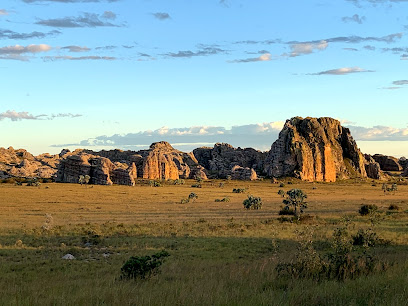
Sakamanga Restaurant
Experience authentic European cuisine in Antananarivo at Sakamanga Restaurant, where every dish tells a story of flavor and tradition.

Tsy Manin - Resto & Chill Out Bar
Discover Tsy Manin - Resto & Chill Out Bar: A culinary haven on Plage de Madirokely offering delightful dishes and stunning ocean views.

L'ORION RESTAURANT
Discover authentic Malagasy flavors at L'ORION RESTAURANT in Antananarivo – where every meal tells a story.

Markets, malls and hidden boutiques
Isalo National Park
Discover the breathtaking landscapes and unique wildlife of Isalo National Park, Madagascar's natural wonder and adventure haven.

ISALO RANCH
Discover the enchanting Isalo Ranch in Madagascar, where adventure meets authentic culture amidst stunning natural beauty.

Piscine naturelle
Explore the tranquil beauty of Piscine Naturelle, a stunning natural swimming pool nestled in the breathtaking landscapes of Ranohira, Madagascar.

Color Line Ilakaka
Explore the exquisite craftsmanship at Color Line Ilakaka, where Madagascar's finest gemstones come to life in stunning jewelry pieces.

COLOMBO GEMS (Polise men)
Explore the exquisite world of Colombo Gems, a gemologist's paradise on RN7, where beauty and quality meet ethical sourcing.
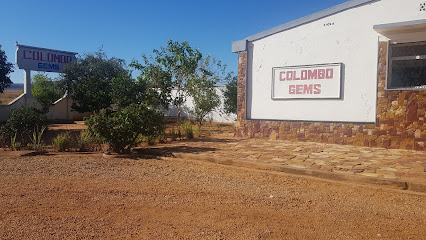
The World Gems - Sakaviro, Madagascar
Explore The World Gems in Sakaviro, Madagascar - where exquisite jewelry meets ethical craftsmanship and local mining heritage.

BAZARY BE
Discover the vibrant BAZARY BE Shopping Mall in Ankazoabo, where local culture, shopping, and delicious cuisine come together for an unforgettable experience.

Ilakaka
Discover the heart of Ilakaka at its convenience store, where local culture meets essential supplies for your adventures.

STYLE REAL
Explore the vibrant fashion scene at STYLE REAL, a unique clothing store in Ihosy, showcasing local artisans and authentic Malagasy styles.

Shifan Siddeek Gems Palace
Explore the breathtaking beauty of gemstones at Shifan Siddeek Gems Palace in Ilakaka - a must-visit for gem lovers and tourists alike.

Canyon Des Singes
Experience the breathtaking beauty and vibrant wildlife of Canyon Des Singes, a must-visit natural attraction in Madagascar.

Rishana Gems
Explore Rishana Gems in Ilakaka, Madagascar – a treasure trove of exquisite gemstones and unique jewelry handcrafted by local artisans.

Zainab Gems International
Explore the exquisite collection of Zainab Gems International in Ilakaka, where Madagascar's vibrant culture shines through stunning jewelry pieces.

Bergerie de l'Isalo
Experience the essence of Madagascar with fresh, locally sourced meats at Bergerie de l'Isalo, a butcher shop steeped in culinary tradition.

Siddeek Gems Palace
Explore the dazzling world of gemstones at Siddeek Gems Palace in Ilakaka, Madagascar - a gemologist's paradise rich in natural beauty.

Essential bars & hidden hideouts
Le Jardin du Roy
Experience the ultimate blend of luxury and nature at Le Jardin du Roy, your perfect retreat in Ranohira, Madagascar, near Isalo National Park.

Isalo Rock Lodge
Experience the breathtaking beauty of Madagascar at Isalo Rock Lodge, your gateway to Isalo National Park's stunning landscapes and wildlife.
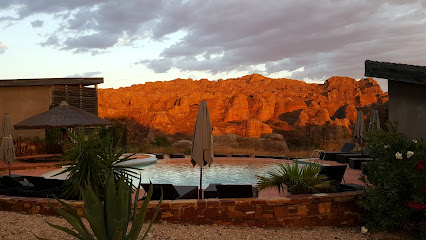
Restaurant Le Zébu Grillé
Experience the authentic flavors of Madagascar at Restaurant Le Zébu Grillé, nestled in the stunning Isalo National Park.

Pizzeria Italiana Liberta
Experience authentic Italian pizza at Pizzeria Italiana Liberta, a culinary gem in Ranohira, Madagascar, perfect for food lovers.
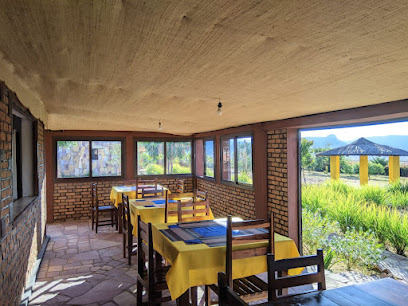
Momo Trek
Discover the flavors of Madagascar at Momo Trek, a culinary haven in Ranohira, where local dishes and warm hospitality await.

NAM Restaurant
Experience the authentic tastes of Madagascar at NAM Restaurant in Ranohira, a culinary gem cherished by locals and tourists alike.

LES TOILES DE L'ISALO
Discover the charm of Madagascar at Les Toiles de L'Isalo, a hotel blending comfort with local culture near Isalo National Park.

Hotely Ramirandava
Discover the flavors of Madagascar at Hotely Ramirandava, where local cuisine meets a warm and welcoming atmosphere in Ranohira.

Friends restaurant
Discover the flavors of Madagascar at Friends Restaurant in Ilakaka, where local ingredients meet a warm and inviting atmosphere.

Trano Bongo
Discover delectable brunch delights at Trano Bongo, Ihosy’s premier restaurant, where local flavors meet warm Malagasy hospitality.

Epicerie Junior
Experience the vibrant local culture and unwind at Epicerie Junior, a lively bar in Ihosy, Madagascar, perfect for travelers seeking authentic connections.

Karaoké Gilbert
Discover the vibrant nightlife of Ihosy at Karaoké Gilbert, where music and local culture blend for an unforgettable experience.

Zahamotel
Experience the authentic taste of Madagascar at Zahamotel, a cozy restaurant in Ihosy known for its local culinary delights and warm hospitality.

Resto Bar Karaoke FG Ranohira
Experience the vibrant culture of Madagascar at Resto Bar Karaoke FG Ranohira, where delicious food meets lively entertainment.

RESTO BAR KARAOKÉ FG
Experience the vibrant culture of Madagascar at Resto Bar Karaoké FG, a unique bed and breakfast offering comfort, local cuisine, and lively entertainment.

Local Phrases about Isalo National Park
-
- HelloSalama
[sa-la-ma] - GoodbyeVeloma
[ve-lo-ma] - YesEny
[e-ny] - NoTsia
[tsi-a] - Please/You're welcomeAzafady
[a-za-fa-dy] - Thank youMisaotra
[mi-sa-ou-tra] - Excuse me/SorryAzafady
[a-za-fa-dy] - How are you?Manao ahoana ianao?
[ma-nao a-wa-na ya-nao] - Fine. And you?Tsara. Ianao?
[tsa-ra ya-nao] - Do you speak English?Miteny Anglisy ianao?
[mi-te-ny an-gli-sy ya-nao] - I don't understandTsy mahay
[tsi ma-ha]
- HelloSalama
-
- I'd like to see the menu, pleaseTe-ha-na man-kany ny menio, azafady
[te-ha-na man-ka-ny ny me-nyo a-za-fa-dy] - I don't eat meatTsy mihinam-be aho
[tsi mi-hi-na-m-be a-ho] - Cheers!Mazotoa!
[ma-zo-to-a] - I would like to pay, pleaseTe-ha-na man-defa vola, azafady
[te-ha-na man-de-fa vo-la a-za-fa-dy]
- I'd like to see the menu, pleaseTe-ha-na man-kany ny menio, azafady
-
- Help!Tsiaro!
[tsi-a-ro] - Go away!Mangina!
[man-gi-na] - Call the Police!Mangina ny polisy!
[man-gi-na ny po-li-sy] - Call a doctor!Mangina mpianatra!
[man-gi-na m-pia-na-tra] - I'm lostTsy nahita ny làlana
[tsi na-hi-ta ny la-la-na] - I'm illTsy tsara aho
[tsi tsa-ra a-ho]
- Help!Tsiaro!
-
- I'd like to buy...Te-ha-na man-kaotra...
[te-ha-na man-ka-o-tra] - I'm just lookingMi-teny fotsiny aho
[mi-te-ny fo-tsi-ny a-ho] - How much is it?Ohomby io?
[o-hom-by io] - That's too expensiveMahafinaritra be io
[ma-ha-fi-na-ri-tra be io] - Can you lower the price?Avela mihena ny vidiny?
[a-ve-la mi-he-na ny vi-di-ny]
- I'd like to buy...Te-ha-na man-kaotra...
-
- What time is it?Inona no hitaovana?
[i-no-na no hi-ta-va-na] - It's one o'clockEnina iray
[e-ni-na i-rai] - Half past (10)An-doha (folo)
[an-do-ha (fo-lo)] - MorningMaraina
[ma-rai-na] - AfternoonAlina
[a-li-na] - EveningHariva
[ha-ri-va] - YesterdayOmaly
[o-ma-ly] - TodayAnio
[a-ni-o] - TomorrowRehefa
[re-he-fa] - 1Isaora
[i-sa-o-ra] - 2Roa
[ro-a] - 3Telo
[te-lo] - 4Efatra
[e-fa-tra] - 5Dimy
[di-my] - 6Enina
[e-ni-na] - 7Fito
[fi-to] - 8Valo
[va-lo] - 9Sivy
[si-vy] - 10Folo
[fo-lo]
- What time is it?Inona no hitaovana?
-
- Where's a/the...?Aiza ny...
[ai-za ny] - What's the address?Inona ny adiresy?
[i-no-na ny a-di-re-sy] - Can you show me (on the map)?Avela am-panaraka aho (amin'ny saritany)?
[a-ve-la am-pana-ra-ka a-ho (a-min-ny sa-ri-ta-ny)] - When's the next (bus)?Aiza ny havaozina (fiara)?
[ai-za ny ha-vao-zi-na (fia-ra)] - A ticket (to ....)Fifankatiavana (ho ...)
[fi-fan-ka-tia-va-na (ho)]
- Where's a/the...?Aiza ny...
History of Isalo National Park
-
The Isalo Massif, the centerpiece of Isalo National Park, is an ancient sandstone formation that dates back to the Jurassic period, approximately 200 million years ago. The unique landscapes, characterized by deep canyons, sandstone cliffs, and eroded rock formations, were shaped by millions of years of geological activity, including tectonic movements and erosion.
-
Evidence of early human inhabitants in the Isalo region dates back thousands of years. Archaeological findings, such as ancient tools and pottery fragments, suggest that indigenous communities lived in the area. These early inhabitants utilized the natural shelters provided by the canyons and caves of the Isalo Massif.
-
The Bara people, a semi-nomadic ethnic group, have long been associated with the Isalo region. Known for their cattle herding traditions, the Bara have a deep cultural connection to the land. The park's caves and cliffs hold significant spiritual importance for the Bara, who use these natural features for rituals and as burial sites.
-
During the late 19th and early 20th centuries, Madagascar was under French colonial rule. European explorers and naturalists began documenting the unique flora and fauna of the Isalo region. Their accounts and collections contributed to the scientific understanding of the area and raised awareness of its ecological significance.
-
Isalo National Park was officially established in 1962. The creation of the park aimed to protect the unique geological formations, diverse ecosystems, and cultural heritage of the region. Managed by Madagascar National Parks, the park covers an area of 815 square kilometers and is a haven for biodiversity and conservation efforts.
-
Isalo National Park is home to a variety of endemic species, including lemurs, reptiles, and numerous plant species. Conservation efforts have focused on protecting these species and their habitats. The park's management has implemented measures to combat illegal logging, poaching, and habitat destruction, ensuring the preservation of its unique biodiversity.
-
Isalo National Park has become a major attraction for tourists seeking to explore Madagascar's natural beauty and cultural heritage. Visitors are drawn to the park's breathtaking landscapes, hiking trails, and opportunities to observe wildlife. The park's cultural significance is highlighted through guided tours that educate visitors about the traditions and practices of the local Bara people.
Isalo National Park Essentials
-
Isalo National Park is located in the Ihorombe Region of Madagascar. The nearest major city with an international airport is Antananarivo, the capital of Madagascar. From Antananarivo, you can take a domestic flight to Toliara (also known as Tulear), which is approximately 240 kilometers from the park. From Toliara, you can hire a taxi or rent a car to reach the park. Alternatively, you can travel by bus or taxi-brousse (shared taxi) from Antananarivo, which takes about 10-12 hours.
-
Within Isalo National Park, the main mode of transportation is on foot. The park is best explored through guided hikes and treks. For longer distances, you can use 4x4 vehicles, which are available for rent. Local guides are highly recommended for navigating the park’s trails and ensuring a safe and informative experience. Additionally, some lodges and campsites offer transportation services to and from the park.
-
The official currency in Madagascar is the Malagasy Ariary (MGA). While credit cards are accepted in some hotels and larger establishments, it is advisable to carry cash, especially when visiting rural areas and national parks. ATMs are available in larger towns such as Toliara, but it is recommended to withdraw sufficient cash before heading to Isalo National Park.
-
Isalo National Park is generally safe for tourists, but it is important to take standard precautions. Avoid hiking alone and always stay on marked trails. Petty theft can occur, so keep your belongings secure and do not leave valuables unattended. While there are no specific high-crime areas targeting tourists within the park, it is always best to stay vigilant and aware of your surroundings.
-
In case of an emergency, contact local authorities or park rangers immediately. The local emergency number in Madagascar is 117 for police assistance. It is also advisable to have travel insurance that covers medical emergencies. For health-related issues, the nearest medical facilities are located in Toliara. Ensure you carry a first aid kit and any necessary medications while hiking in the park.
-
Fashion: Do wear comfortable and breathable clothing suitable for hiking. Use sturdy footwear and carry a hat and sunscreen to protect yourself from the sun. Avoid wearing revealing clothing. Religion: Do respect local customs and traditions. Although the park is not a religious site, it is important to show respect to local guides and communities. Public Transport: Do plan your travel in advance and be prepared for long journeys. Public transport options like taxi-brousses can be crowded and less comfortable. Greetings: Do greet people with a friendly 'Salama' (hello in Malagasy). A warm smile and handshake are appreciated. Eating & Drinking: Do try local delicacies and accept food offerings graciously. Don't refuse hospitality, as it is considered impolite.
-
To experience Isalo National Park like a local, engage with local guides who can share valuable insights about the park’s flora, fauna, and history. Visit the natural swimming pools and waterfalls, which are popular among locals. Participate in traditional Malagasy events or festivals if your visit coincides with any. Lastly, support local communities by purchasing handmade crafts and souvenirs.
-
Best Time to Visit: The best time to visit Isalo National Park is during the dry season from April to October, when the weather is cooler and more suitable for hiking. Permits: Ensure you obtain the necessary permits before entering the park, which can be arranged through your tour operator or at the park entrance. Wildlife: Keep an eye out for unique wildlife, including lemurs, chameleons, and various bird species. Photography: Do bring a camera to capture the stunning landscapes, but always ask for permission before photographing local people.
Nearby Cities to Isalo National Park
-
Things To Do in Toliara
-
Things To Do in Fianarantsoa
-
Things To Do in Mandrare River
-
Things To Do in Manakara
-
Things To Do in Fort Dauphin
-
Things To Do in Antsirabe
-
Things To Do in Antananarivo
-
Things To Do in Andasibe
-
Things To Do in Toamasina
-
Things To Do in Mahajanga
-
Things To Do in Majunga
-
Things To Do in Inhambane
-
Things To Do in Vilanculos
-
Things To Do in Maxixe
-
Things To Do in Chirongui








